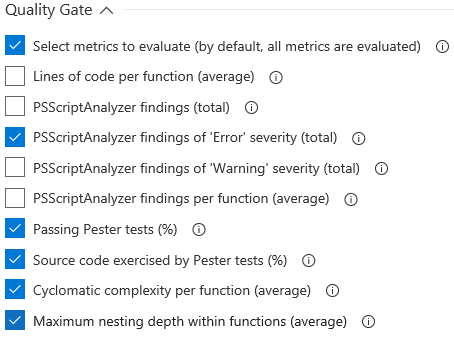A warning on $ErrorActionPreference and Try/Catch for .NET developers
I recently stumbled upon a PowerShell Script from a .NET Developer/Architect who shall remain nameless, which contained this :
# set error action preference so errors don't stop and the trycatch
# kicks in to handle gracefully
$ErrorActionPreference = "Continue"
try {
...
...
}
catch {
...
...
}
Let me this say this bluntly : this is a HUGE misunderstanding of error handling in PowerShell.
Yes, PowerShell is based on the .NET Framework.
Yes, it understands the different types of exceptions which are in the Framework class library.
Yes, it uses Try{} Catch{} or Try{} Catch{} Finally{} to handle errors like in C#.
But PowerShell has its idiosyncrasies.
In C#, we can choose to handle exceptions using Try{} Catch{} or to not handle the exception in the current method and let the CLR look for a Catch block in another method somewhere up the call stack.
First, in PowerShell, we generally don’t use the term “exception”, we use the term “error”, but that’s mainly a terminology thing.
The big catch (pun intended) is that Powershell have terminating errors and non-terminating errors.
A terminating error is raised by a cmdlet when something is wrong, so wrong that it cannot continue processing any other items in the pipeline and it has to stop immediately.
Generally, this is because the cmdlet doesn’t know what the hell you are talking about (a syntax or a type-related error).
A non-terminating error is raised by a cmdlet when something is wrong but it does not prevent the cmdlet from processing the other items in the pipeline. Here is a example of a non-terminating error :
C:\> Get-ChildItem 'DoesNotExit', 'DoesExit'
Get-ChildItem : Cannot find path 'C:\DoesNotExit' because it does not exist.
At line:1 char:1
+ Get-ChildItem 'DoesNotExit', 'DoesExit'
+ ~~~~~~~~~~~~~~~~~~~~~~~~~~~~~~~~~~~~~~~
+ CategoryInfo : ObjectNotFound: (C:\DoesNotExit:String) [Get-ChildItem],
ItemNotFoundException
+ FullyQualifiedErrorId : PathNotFound,Microsoft.PowerShell.Commands.GetChildItemCommand
Directory: C:\
Mode LastWriteTime Length Name
---- ------------- ------ ----
-a---- 7/27/2015 10:37 PM 0 DoesExit
We can see that Get-ChildItem raises an error because it cannot find the file DoesNotExist, but it keeps going and processes the second file name.
The second part of the catch (pun intended again), and this is where many PowerShell beginners get tripped up, is that the Catch block will execute only if a cmdlet in the Try block raises a terminating error.
So, the Get-ChildItem example above would not trigger the Catch block.
2 possible solutions :
- Set the global variable
$ErrorActionPreferenceto “Stop” - Use the cmdlet parameter
-ErrorActionto ensure any error from that cmdlet is terminating.
Personally, I prefer the latter because messing with global variables can affect other scripts/modules/commands (and it hurts puppies).
C:\> Get-ChildItem 'DoesNotExit', 'DoesExit' -ErrorAction Stop
Get-ChildItem : Cannot find path 'C:\DoesNotExit' because it does not exist.
At line:1 char:1
+ Get-ChildItem 'DoesNotExit', 'DoesExit' -ErrorAction Stop
+ ~~~~~~~~~~~~~~~~~~~~~~~~~~~~~~~~~~~~~~~~~~~~~~~~~~~~~~~~~
+ CategoryInfo : ObjectNotFound: (C:\DoesNotExit:String) [Get-ChildItem],
ItemNotFoundException
+ FullyQualifiedErrorId : PathNotFound,Microsoft.PowerShell.Commands.GetChildItemCommand
This time, Get-ChildItem stops immediately and doesn’t process any other file.
So now that we understand how errors are handled by PowerShell cmdlets, how do we fix the script to ensure that the Catch{} will be executed when an error occurs in the Try{} ?
Try {
# cmdlets which might raise terminating or non-terminating errors
Get-ChildItem 'DoesNotExit', 'DoesExit' -ErrorAction Stop
...
}
Catch {
# Error handling code
...
}
Now, any error raised by Get-ChildItem will immediately stop execution and run whatever error handling code we put in the Catch block.
So, my advice to developers coming from C# or any other language to PowerShell is : don’t try to guess PowerShell behaviours based on the behaviours of other languages. In fact, as an engineer, you should never make assumptions.
Remember, the root cause of any bug is that someone, somewhere, made an assumption.



Leave a Comment
Your email address will not be published. Required fields are marked *